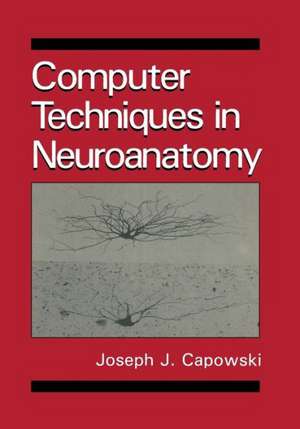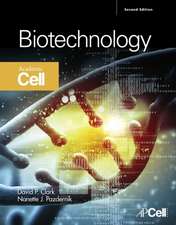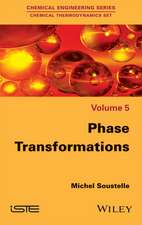Computer Techniques in Neuroanatomy
Autor J.J. Capowskien Limba Engleză Paperback – mar 2012
Preț: 407.39 lei
Nou
Puncte Express: 611
Preț estimativ în valută:
77.96€ • 81.76$ • 64.90£
77.96€ • 81.76$ • 64.90£
Carte tipărită la comandă
Livrare economică 01-15 aprilie
Preluare comenzi: 021 569.72.76
Specificații
ISBN-13: 9781468456936
ISBN-10: 1468456938
Pagini: 508
Ilustrații: 502 p.
Dimensiuni: 178 x 254 x 27 mm
Greutate: 0.87 kg
Ediția:Softcover reprint of the original 1st ed. 1989
Editura: Springer Us
Colecția Springer
Locul publicării:New York, NY, United States
ISBN-10: 1468456938
Pagini: 508
Ilustrații: 502 p.
Dimensiuni: 178 x 254 x 27 mm
Greutate: 0.87 kg
Ediția:Softcover reprint of the original 1st ed. 1989
Editura: Springer Us
Colecția Springer
Locul publicării:New York, NY, United States
Public țintă
ResearchCuprins
1. The History of Quantitative Neuroanatomy.- 1.1. Introduction.- 1.2. Early History of Drawing Neurons.- 1.3. How the Microscope Handicaps the User.- 1.4. Drawing with the Camera Lucida.- 1.5. The Pantograph: A Plotter for the Microscope.- 1.6. Physical Model Building.- 1.7. Early Attempts at Statistical Summaries.- 1.8. How the Computer Helps Visualizing and Summarizing.- 1.9. For Further Reading.- 1.10. What This Book Presents.- 2. Laboratory Computer Hardware.- 2.1. Introduction.- 2.2. Overview of Key Components.- 2.3. Concepts and Definitions.- 2.4. Computing Hardware Described in Some Depth.- 2.5. Physical Construction of Laboratory Computers.- 2.6. Common Laboratory Computers.- 2.7. Purchasing a Computer.- 2.8. For Further Reading.- 3. Software in the Neuroanatomy Laboratory.- 3.1. Introduction.- 3.2. How Software is Written.- 3.3. System Software.- 3.4. Applications Software.- 3.5. Common Programming Languages.- 3.6. Software Costs and Productivity.- 3.7. The Vendor’s Dilemma.- 3.8. For Further Reading.- 4. Semiautomatic Entry of Neuron Trees from the Microscope.- 4.1. Introduction.- 4.2. Principles of Semiautomatic Neuron Tracing.- 4.3. The UNC Neuron-Tracing System.- 4.4. Other Neuron-Tracing Techniques.- 4.5. For Further Reading.- 5. Input from Serial Sections.- 5.1. Introduction.- 5.2. History.- 5.3. Purpose of Serial Section Reconstruction.- 5.4. Entering Serial Sections into the Computer.- 5.5. The Storage of Data.- 5.6. Editing of Data.- 5.7. Displays and Plots of Serial Section Reconstructions.- 5.8. Statistical Summarizations of Serial Section Reconstructions.- 5.9. For Further Reading.- 6. Video Input Techniques.- 6.1. Introduction.- 6.2. A Video-Based Anatomic Data-Collecting System.- 6.3. Extracting Vector Information from a Televised Image.- 6.4.Extracting Optical-Density Information.- 6.5. Masking of Images.- 6.6. Particle Counting.- 6.7. Automatic Focusing.- 6.8. Video Input Compared to Directly Viewed Input.- 6.9. For Further Reading.- 7. Intermediate Computations of Reconstructed Data.- 7.1. Introduction.- 7.2. Focus-Axis Problems.- 7.3. Merging of Multiple-Section Dendrites.- 7.4. Aligning One Tissue Section with Another.- 7.5. Editing.- 7.6. Mathematical Testing of the Data Base.- 7.7. Serial Inspection of Structures.- 7.8. Reordering of Trees.- 7.9. Filtering.- 7.10. Storage of Data on Disk.- 7.11. Conclusion.- 7.12. For Further Reading.- 8. Three-Dimensional Displays and Plots of Anatomic Structures.- 8.1. Introduction.- 8.2. Three-Dimensional Displays on a Two-Dimensional Screen.- 8.3. Vector Display of Structure.- 8.4. Raster Display of Structures.- 8.5. Three-Dimensional Plots of Neuroanatomical Structure.- 8.6. For Further Reading.- 9. Mathematical Summarizations of Individual Neuron Structures.- 9.1. Introduction.- 9.2. Numeric Summaries of a Cell.- 9.3. Graphing Summaries.- 9.4. For Further Reading.- 10. Topological Analysis of Individual Neurons.- 10.1. Introduction.- 10.2. Classification of Tree Types.- 10.3. Classification Based on Different Topological Features.- 10.4. Comparison of Measures for Asymmetry of Trees.- 10.5. Ordering Systems for Segments.- 10.6. Analysis of Incomplete Trees.- 10.7. In Conclusion.- 10.8. Summary.- 10.9. Appendix.- 11. Statistical Analysis of Neuronal Populations.- 11.1. Introduction.- 11.2. Metrics of Somatic Size and Dendritic Segments.- 11.3. Angular Metrics of Bifurcations.- 11.4. Spatial Orientation of Trees.- 11.5. Statistical Evaluation of Groups of Neurons.- 11.6. In Conclusion.- 11.7. Summary.- 12. Controlling the Computer System: The User Interface.- 12.1. Introduction.- 12.2. Principles of User Interface Design.- 12.3. Selecting Commands.- 12.4. Using Interactive Devices to Control Tracing.- 12.5. Data Storage.- 12.6. Error Handling.- 12.7. Presentation of Output.- 12.8. Subroutine Libraries.- 12.9. User Manuals and Other Documentation.- 13. Video Enhancement Techniques.- 13.1. Introduction.- 13.2. Hardware.- 13.3. Software.- 13.4. Enhancing the Image.- 13.5. Is Image Processing Legitimate?.- 13.6. For Further Reading.- 14. The Analysis of Immunohistochemical Data.- 14.1. Introduction.- 14.2. Hardware for Image Analysis.- 14.3. Characteristics of Image Analyzers.- 14.4. How to Evaluate and Resolve Problems with an Image-Analysis System.- 14.5. How to Measure Immunocytochemically Labeled Tissue.- 14.6. Analysis of Immunocytochemistry Data.- 14.7. Histochemistry Procedures and Controls.- 14.8. Summary and Additional Information.- 14.9. For Further Reading.- 15. Fully Automatic Neuron Tracing.- 15.1. Introduction.- 15.2. The Automatic Reconstruction Problem.- 15.3. A Standard of Comparison.- 15.4. The Current Art of Automatic Tracing.- 15.5. For Future Work.- 15.6. Conclusion.- 15.7. For Further Reading.- 16. Commercially Available Computer Systems for Neuroanatomy.- 16.1. Introduction.- 16.2. Companies and Their Products.- References.- Selected Reading.














